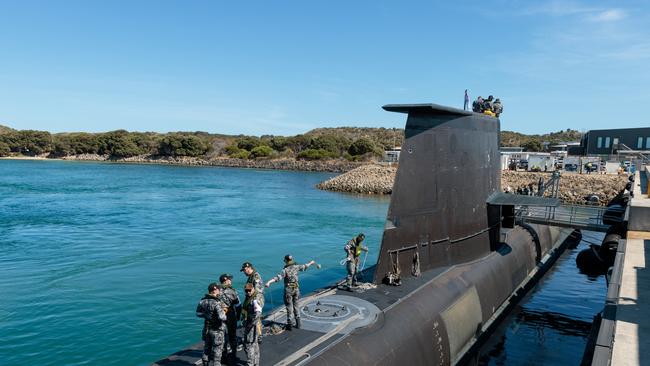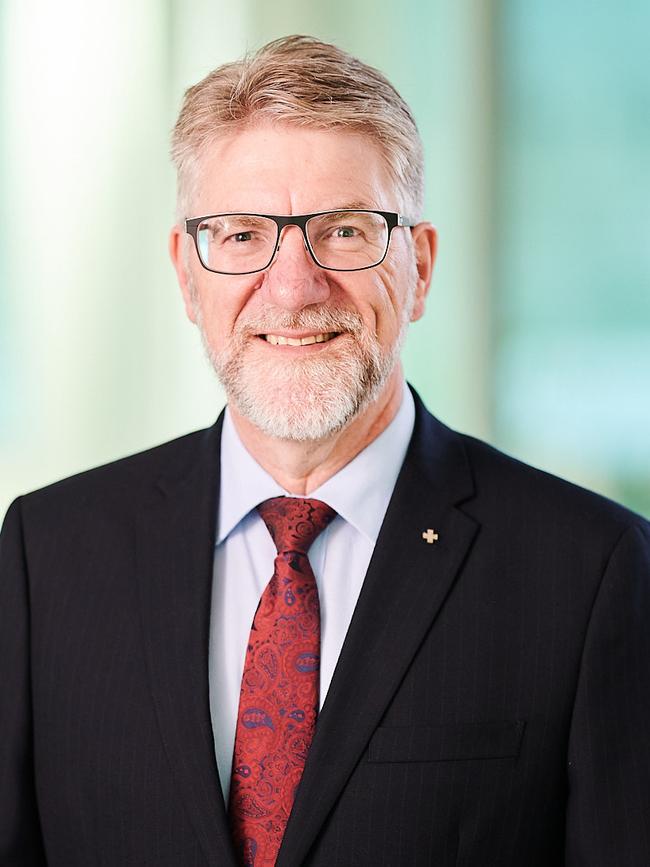WA has a vital role in AUKUS security deal
Homeporting and sustainment of our future submarines will be so vital, encompassing crew support, resupply, maintenance, repair, and upgrade. These responsibilities fall on Western Australia.

In 2021 the federal government announced the AUKUS trilateral security agreement and the intention to acquire a conventionally armed, nuclear-powered submarine capability.
As a former anti-submarine warfare specialist in the Royal Australian Navy, I am acutely aware of how formidable an opponent a nuclear-powered submarine can be.
Their stealth, speed and virtually unlimited endurance make them very difficult threats to counter. They create uncertainty for an adversary and act as a powerful deterrent.
However, like all pieces of military hardware, they are only useful in the defence of the nation when available for deployment.
This is why the effective homeporting and sustainment of our future submarines will be so vital, encompassing crew support, resupply, routine maintenance, repair and upgrade. These responsibilities fall on Western Australia.
The Western Australian government is working closely with the federal government and Defence to ensure the required support, infrastructure and trained industry workforce will be available to enable increasing visits by Allied submarines, the extended presence of these submarines under Submarine Rotational Force – West from 2027, and the homeporting of Australian submarines from the 2030s.
However, a decision has yet to be made on the location for depot-level maintenance of our future submarines.
Western Australia is uniquely suited to undertake this important work when it is required from the mid to late 2030s. We have been developing sustainment skills and experience for more than a decade; we have the physical space for the required facilities at the Australian Marine Complex at Henderson; it would go against international best practice to have depot-level maintenance and submarine construction in the same facility, and; we can generate the skilled workforce to undertake the work.
Some on the east coast have questioned whether Western Australia can shoulder the load of homeporting and delivering routine and depot-level maintenance, suggesting our labour market is too tight and the work should be relocated. And I will not deny Western Australia has a lot on its plate.
Billions of dollars of shipbuilding and sustainment work is already contracted at the AMC and depending on the federal government’s response to the Naval Surface Combatant Fleet Review, this figure could grow.
Workforce and materials will need to be generated to deliver the already announced $8bn upgrades at HMAS Stirling.
There is a range of major Western Australian government initiatives to be delivered, including the new Westport container facility in Kwinana, a few kilometres down the coast from the AMC and HMAS Stirling.

Against this background, building the dry docks and supporting infrastructure and growing the skilled workforce for depot-level maintenance of nuclear-powered submarines will be a significant undertaking. Close co-operation and co-ordination will be required between the Western Australian and federal governments.
But Western Australia has a history of successfully delivering large-scale projects. At the height of the mining boom a decade ago, the state was delivering these projects with regularity. Our organisation and training regimes kept pace, our governance kept pace and our industry kept pace.
Our vocational education sector is world class, and in the past 12 months Western Australian defence industry businesses have put on nearly 500 apprentices. That number is anticipated to grow year on year as we build towards the sustainment requirements of Submarine Rotational Force – West.
Our four public universities are also focused on growing the tertiary-qualified professionals that will be required to support future shipbuilding and nuclear-powered submarine sustainment.
It should also be remembered that Western Australia has been the homeport for Collins-class submarines since their introduction into service in the 1990s.
The Australian Submarine Corporation, supported by a diverse range of Western Australian-based small and medium enterprises, co-ordinates routine submarine maintenance at HMAS Stirling as well as intermediate and mid-cycle docking activities at the AMC.
This solid foundation in submarine sustainment will allow us to scale up in terms of our supply chains and our SME cohort. We are certainly not starting from scratch.
Western Australia looks forward with optimism to continuing its longstanding support for the Australian Defence Force, and particularly realising its potential in enabling the successful introduction, operation and sustainment of Australia’s nuclear-powered submarine capability.
Rear Admiral Philip Spedding assumed the role of Defence Advocate in January 2023. He provides independent advice to the Western Australian government.


